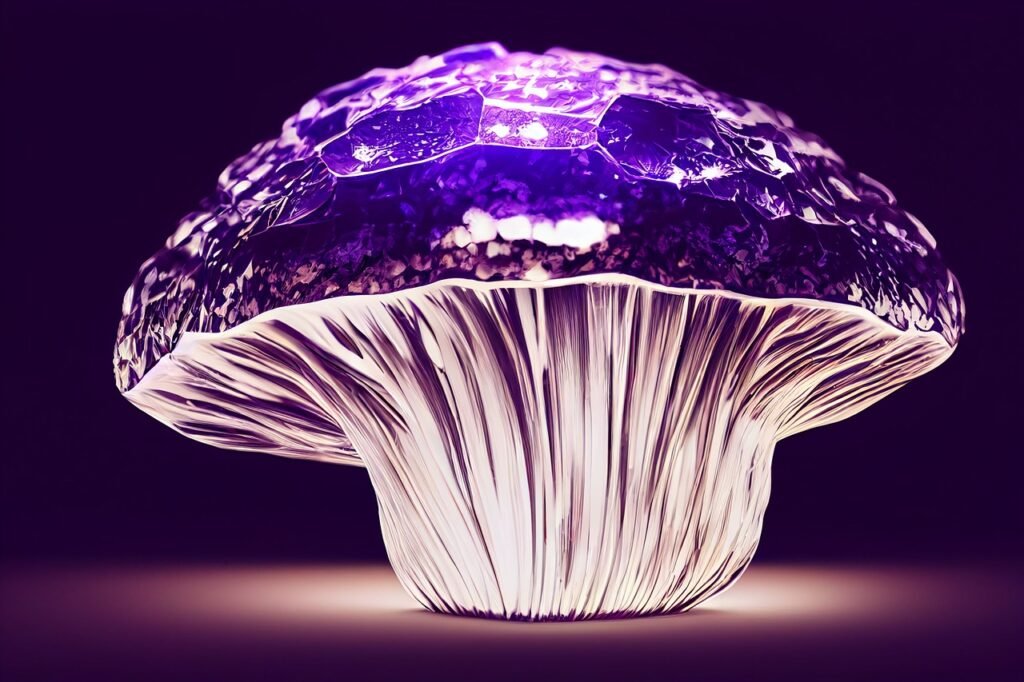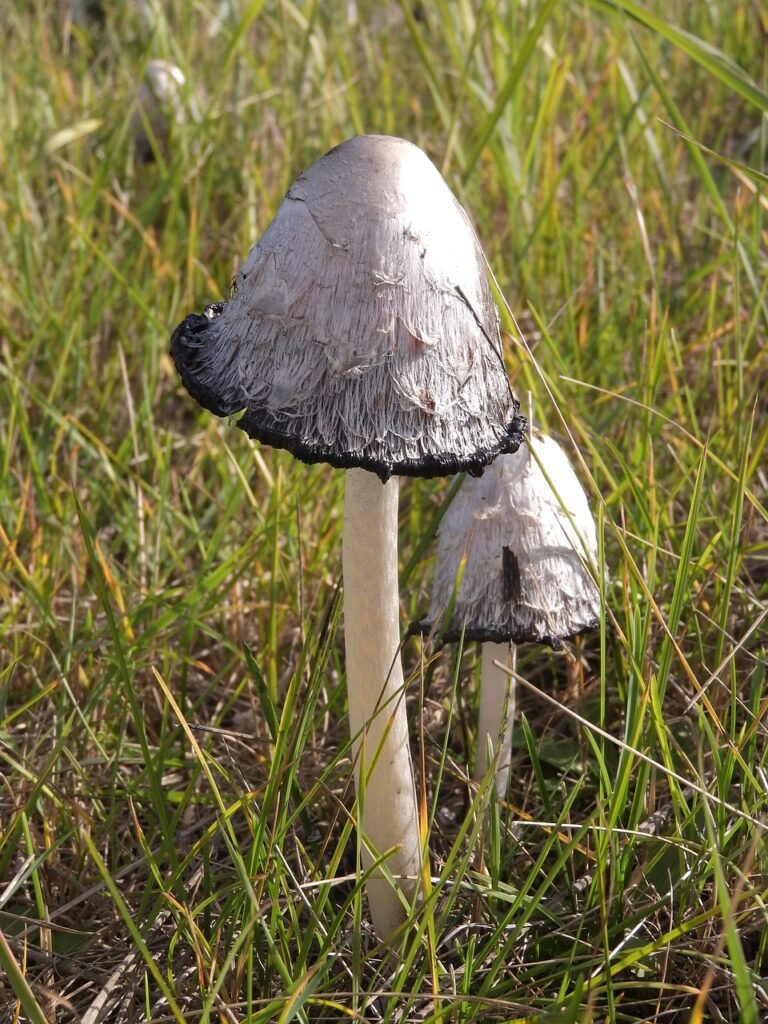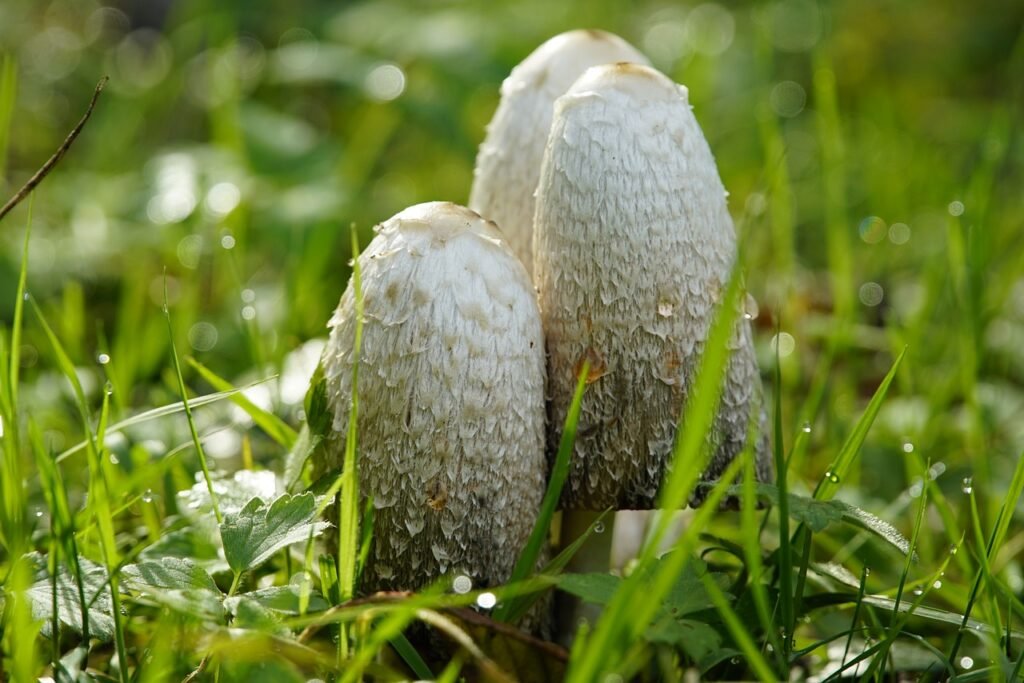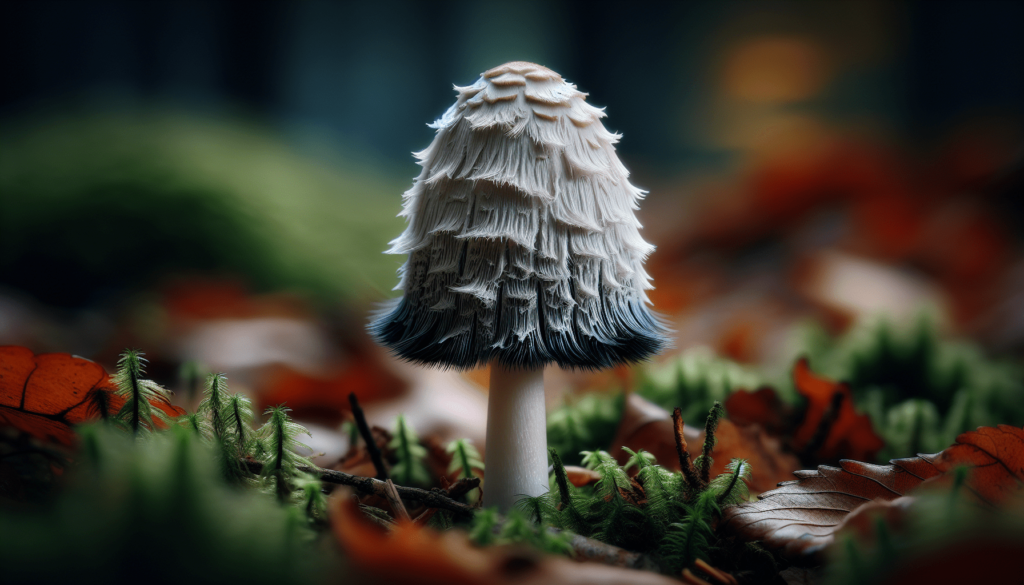“The Enigmatic Coprinus comatus” takes you on a fascinating journey into the world of one of nature’s most mysterious fungi. You will discover the unique characteristics of Coprinus comatus, also known as the Shaggy Mane mushroom, from its intriguing appearance to its fleeting lifespan. You’ll learn about its preferred habitats, its role in the ecosystem, and its surprising culinary uses. This article will unravel the many layers of this beguiling mushroom, offering you a deeper appreciation of its place in the natural world.
The Enigmatic Coprinus comatus

Have You Ever Wondered About the Fascinating World of Mushrooms?
If you’ve ever wandered through a lush forest after a fresh rain, you may have stumbled upon a group of shaggy mushrooms that almost appear to be melting. These intriguing fungi are none other than Coprinus comatus, also known as the Shaggy Mane or Ink Cap mushroom. The curious appearance and unique characteristics of Coprinus comatus make it a captivating subject for both amateur mycologists and culinary enthusiasts alike. So, if you’re ready to delve deeper into the world of this enigmatic species, read on!
What is Coprinus comatus?
A Brief Introduction
Coprinus comatus is a species of fungi belonging to the family Agaricaceae. Its common names—Shaggy Mane and Ink Cap—are derived from its distinct physical characteristics. The scientific community identifies it by its unmistakable shaggy exterior and its tendency to dissolve into a black, ink-like substance as it matures.
Physical Characteristics
Understanding the physical traits of Coprinus comatus can help you identify this mushroom in the wild. Here are some key features:
| Feature | Description |
|---|---|
| Cap | White, cylindrical, shaggy surface with scales |
| Gills | Initially white, turn black and dissolve as they age |
| Stem | Tall, white, and fibrous, sometimes hollow |
| Spore Print | Black |
| Size | Cap diameter: 5-10 cm, Height: Up to 15 cm |
| Texture | Soft and fleshy when young, becomes liquefied as it ages |
The Lifecycle of Coprinus comatus
Fruiting Stage
The lifecycle of Coprinus comatus begins with the fruiting stage, where it emerges from the ground in its characteristic cylindrical shape. You’ll notice the mushroom is initially white and covered in shaggy scales, which is where it gets its “Shaggy Mane” nickname.
Autodigestion
One of the most fascinating aspects of Coprinus comatus is its autodigestion process, commonly referred to as deliquescence. As the mushroom matures, the cap’s gills start to darken and liquefy, eventually turning into a black, inky substance. This unique trait aids in spore dispersal, ensuring the next generation of fungi.
Spore Release
At the peak of deliquescence, the spores are released into the environment through the inky liquid. These spores are carried away by wind or water, finding their way into new substrates where they can germinate and start the lifecycle anew.
Culinary Uses
Edibility
Many mushrooms in the wild can be toxic, but Coprinus comatus is generally considered safe to eat when young. As it matures and begins its autodigestion process, it becomes less appealing for culinary purposes and is best avoided.
Nutritional Value
This mushroom is not only delicious but also nutritious. Here’s a quick breakdown of its nutritional content per 100 grams:
| Nutrient | Amount |
|---|---|
| Calories | 27 kcal |
| Protein | 3.1 g |
| Carbohydrates | 4.3 g |
| Fiber | 1.0 g |
| Vitamin C | 3.3 mg |
| Calcium | 3.0 mg |
| Iron | 0.5 mg |
Cooking Tips
When cooking Coprinus comatus, time is of the essence. You’ll want to harvest it while it’s young and still white. Here are some popular cooking methods:
- Sautéing: Sauté the mushrooms in butter or olive oil with garlic and herbs for a simple yet delectable dish.
- Soups and Stews: Add Coprinus comatus to soups and stews for an extra layer of flavor and nutritional benefits.
- Breaded and Fried: Slice the mushroom and coat it in breadcrumbs before frying for a crispy treat.

Medicinal Properties
Historical Uses
Historically, various cultures have utilized Coprinus comatus for its purported medicinal properties. Traditional remedies often involve using this mushroom to treat conditions like digestive issues or skin ailments.
Modern Research
Recent studies have shown that this mushroom may have several beneficial properties:
- Antioxidant Effects: Rich in compounds that help neutralize harmful free radicals.
- Anti-inflammatory: May help reduce inflammation in the body.
- Antibacterial: Possesses properties that can inhibit the growth of certain bacteria.
It’s important to note that more research is needed to fully understand and validate these benefits. Always consult with a healthcare provider before using mushrooms for medicinal purposes.
Ecological Role
Decomposer
Coprinus comatus plays a vital role in the ecosystem as a decomposer. It helps break down organic matter, returning essential nutrients to the soil. This makes it an integral part of forest and grassland ecosystems.
Symbiotic Relationships
Though primarily decomposers, some fungi form symbiotic relationships with plants, aiding in nutrient absorption. However, Coprinus comatus is mainly known for its decomposing abilities.
Environmental Indicators
The presence of Coprinus comatus can be an indicator of soil health. Their ability to break down organic material suggests a rich and healthy soil environment.

Identification Tips
Habitat
Coprinus comatus is commonly found in grassy areas, such as lawns, meadows, and along roadsides. It tends to grow in clusters, especially after heavy rain.
Look-alikes
There are other mushrooms, like the inky cap species (Coprinopsis atramentaria), which resemble Coprinus comatus but are not always safe to eat. Always make sure you correctly identify any wild mushroom before consumption.
Seasonality
This mushroom typically appears in spring and autumn, thriving in cooler, wetter conditions.
Foraging Guidelines
Safety First
If you’re interested in foraging for Coprinus comatus, safety should be your top priority. Never consume a wild mushroom unless you’re absolutely certain of its identification. Consider joining a local mycology club or going on a guided foraging tour to learn from experienced foragers.
Ethical Foraging
When foraging, always practice sustainable and ethical methods. Only take what you need and leave enough for the ecosystem to replenish its population.
Legal Considerations
Make sure to check your local regulations regarding mushroom foraging. Some areas have restrictions and require permits, so be informed before you venture out.

The Cultural Significance of Coprinus comatus
Folklore and Mythology
Throughout history, mushrooms have been the subject of various folklore and myths. In many cultures, they are seen as magical entities that sprout overnight. The sudden appearance of Coprinus comatus after rain has certainly contributed to such mystical narratives.
Artistic Representations
The unique appearance of Coprinus comatus has made it a popular subject in art and literature. Whether depicted in botanical illustrations or mentioned in poems, this mushroom has captured the imagination of many.
Culinary Legacy
In some cultures, Coprinus comatus holds a special place in culinary traditions. Its fleeting edibility has led to a sense of urgency and celebration when it is harvested and prepared, often becoming a focal point at seasonal gatherings.
Conclusion: The Enigmatic Coprinus comatus
So, there you have it—your comprehensive guide to the enigmatic Coprinus comatus. From its unique physical characteristics and lifecycle to its culinary and medicinal uses, this mushroom is truly a marvel of nature. The next time you find yourself in a damp, grassy area after a rainstorm, keep an eye out for these fascinating fungi. Whether you’re a seasoned forager, a budding mycologist, or someone with a culinary curiosity, the Shaggy Mane offers something for everyone.
Remember, the key to appreciating nature’s wonders, like Coprinus comatus, is respect and understanding. So, get out there, explore, and let your fascination for this incredible mushroom grow!

